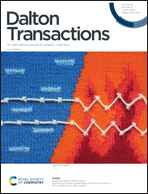Bimetallic sulfide/N-doped carbon composite derived from Prussian blue analogues/cellulose nanofibers film toward enhanced oxygen evolution reaction†
Abstract
Exploiting effective, stable, and cost-efficient electrocatalysts for the water oxidation reaction is highly desirable for renewable energy conversion techniques. Constructional design and compositional manipulation are widely used approaches to efficaciously boost the electrocatalytic performance. Herein, we designed a NiFe-bimetallic sulfide/N-doped carbon composite via a two-step thermal treatment of Prussian blue analogues/cellulose nanofibers (PBA/CNFs) film. The NiFe-bimetallic sulfide/N-doped carbon composite displayed enhanced OER performance in an alkaline environment, with an overpotential of 282 mV at 10 mA cm−2, a Tafel slope of 59.71 mV dec−1, and good stability, making the composite a candidate electrocatalyst for OER-related energy equipment. The introduction of CNFs in the precursor prevented the aggregation of PBA nanoparticles (NPs), exposed more active sites, and the resulting carbon substrate enhanced the electroconductivity of the composite. Moreover, the synergistic effect of Ni and Fe in the bimetallic sulfide could modulate the configuration of electrons, enrich the catalytically active sites, and augment the electric conductivity, thus ameliorating the OER performance. This study broadens the application of MOF-CNF composites to construct hierarchical structures of metal compounds and provides some thoughts for the development of cost-effective precious-metal-free catalysts for electrocatalysis.



 Please wait while we load your content...
Please wait while we load your content...